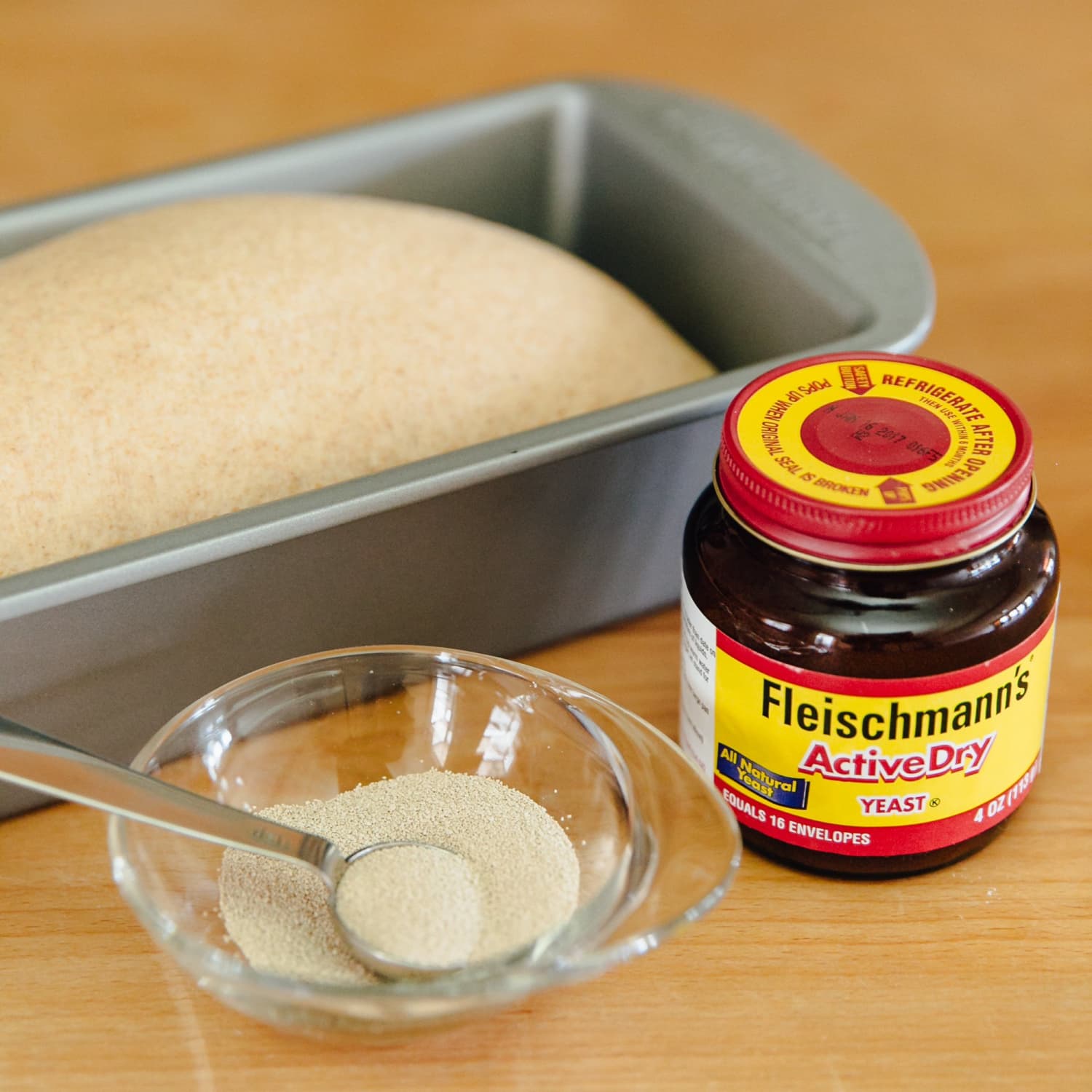
It involves plenty of yeast trapping carbon dioxide and linking gluten moleculesWhether. Bread bakes for long enough that it will eventually get too hot for yeast to survive.

That makes your bread rise lighter and higher.
What makes bread rise. What is difference between bread flour and self rising. In short self rising flour is a mixture of all-purpose flour baking soda and salt and is used for cakes and non-yeast breads. On the other hand bread flour is just flour that has a high protein content making it ideal for sourdough and similar types of breads.
Bakers yeast is a living organism that is part of the fungus family. This leavening agent makes bread dough rise through fermentation. The yeast changes the sugar in the dough into carbon dioxide gas and ethanol alcohol.
The gas trapped in the dough makes it rise. The alcohol produced during fermentation evaporates during baking. Dough made with bakers yeast rises slowly over a long time.
This process releases CO2 gas which forms bubbles that become trapped in the stretchy dough. During baking the ovens heat expands the bubbles even further. Subscribe to BBC Focus magazine for fascinating new QAs every month and follow sciencefocusQA on Twitter for.
That makes your bread rise lighter and higher. Of course it also gives a pleasant flavor and I feel good about being as frugal as my grandmother was. Dont keep potato water more than a few days.
Since we cant manipulate time when using a bread machine we control yeast growth with other factors so that has risen optimally when the bread begins to bake. The quantity of yeast in the recipe makes a difference. Usually a baker controls the rise with other factors and does not change the quantity of yeast.
However in a very cool environment you may want to increase the yeast slightly and in a. Bread needs long strong and elastic gluten to be able to retain gas as it rises. Without a good gluten stricture the bread will not rise to its full potential.
Bread made at a warm fermentation temperature will rise fast and therefore lose out on a bit of dough maturity. The big lesson here. Too much of any ingredient can mess with your breads riseeven flour.
Too much flour can make your dough stiff and dry. And we all know what happens if theres not enough liquid present for the yeast to use. It doesnt work the way it should.
So be mindful of your measurements and how much flour your dough picks up in the kneading process. You want the dough to be slightly sticky. Water temperature will affect how bread dough rises if the water is too cold it will slow down the yeast and the fermentation process.
If its too warm it will make the bread rise too quickly and lead to bread with less flavour. Using water which is hot could even kill the yeast and stop it. Most of what makes a loaf of bread rise is to do with its smallest ingredient.
However it needs help from some of the other ingredients so that it can do its job. Yeast is a type of funghi mushrooms come from the same family and it is a living organism. Leavening agents make bread and other baked good rise by causing a foaming action that traps air bubbles in the food as it cooks.
The trapped air gives the final product a light and fluffy texture. The trapped air gives the final product a light and fluffy texture. If the flour has less than 11 it may only be suitable for making bread with a long first rise.
The broken protein particles will repair during this time and the gluten will strengthen. You can also add vital wheat gluten powder to the flour. The extra gluten effectively turns weaker flour into bread flour and while its not quite the same grade it will still make pretty good fluffy bread.
Compare your different breads again when they are cool. What makes bread rise. Different types of flour are used to make different types of bread.
Most flours are made from grinding wheat. There are also other types of flour which are made from other ingredients such as rice potatoes and soya. Some people cant eat bread because theyre allergic to wheat or gluten which is in wheatSo they have.
What makes bread rise Secondary project briefs ages 11 Bronze Awards are typically completed by students aged 11. They complete a ten-hour project which is a perfect introduction to STEM project work. In this way the oven makes all bubbles of gas grow larger inside the dough pushing the dough up further.
The combination of gas produced by the yeast the strength of the gluten and heat from the oven come together to make bread rise. Bread bakes for long enough that it will eventually get too hot for yeast to survive. However the holes you.
Lauren explores whats actually happening when we make bread. It involves plenty of yeast trapping carbon dioxide and linking gluten moleculesWhether.